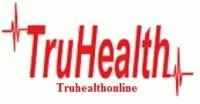Lack of vitamins manifests itself in bone deformities, poor vision, skin changes, reduced resistance to diseases, and accelerated aging among others.In terms of solubility in water, there are two groups of vitamins:- Fat-soluble vitamins and Water-soluble vitamins.
The fat soluble vitamins are A, D, E, and K.; they do not dissolve in water and are more available in fatty foods.
The water soluble vitamins dissolve in water and include B and C.; there are about 8 vitamins under Vitamin B.In terms of being vitamins, there are six main groups of vitamins (A, B, C, D, E and K) with each group having many vitamins
Some are manufactured by us while we obtain others from the food we eat. Some vitamins are stored in some parts of the body such as the liver, lungs, kidneys, and adipose tissue.
Today we shall discuss the food sources of the six vitamins mentioned above which are essential for our growth, development and maintenance.
1. Vitamin A
Vitamin A is necessary for proper development of the eyes, prevents dryness of the eyes and also ensures night vision, it prevents night blindness. In fact low Vitamin A level in the body can destroy the eyes. Vitamin A has anti- macular degeneration properties and reduces the risk of premature cataract. It is essential for the maintenance of the structural integrity of the eye (retina, cornea and lining of the eye)
Vitamin A is also essential for vision as it facilitates the transmission of light signals from the eye to the brain; both night and day vision.
Vitamin A is associated with resistance against infections, low Vitamin A reduces our resistance to infections.
Though Vitamin A can be stored in the body we need to consume foods containing the Vitamin daily; food sources of Vitamin A include Fish, Fish oils, Liver, Eggs, Dark green and yellow-orange vegetables (carrots, spinach, sweet potato, broccoli and lettuce) and Fruits (mangoes, apricot, peaches).
A diet containing green vegetables and carrot will meet your daily requirement.
Vitamin A is also contained in Fortified Milk and Margarine
2. Vitamin B
There are about 8 vitamins under Vitamin B as they all occur together in the same foods though chemically different. The 8 vitamins under Vitamin B are: Vitamin B1 (Thiamine), Vitamin B2 (riboflavin), Vitamin B3 (Nicotinic acid), Vitamin B5 (Pantothenic acid), Vitamin B6 (Pyridoxine), Vitamin B7 (Biotin), Vitamin B9 (Folic acid) and Vitamin B12 (Cyanocobalamin)
Vitamin B is necessary for proper cell metabolism, for enzyme production and so forth. Deficiency of Vitamin B could result in several conditions such as skin rash, beriberi, anaemia, angular stomatitis, cracked lips etc.
Of the 8 vitamins under Vitamin B, only Vitamins B12 and B6 are stored in the body, the others are excreted like other water soluble vitamins.
Food sources of Vitamin B include Wheat products ( bread, rolls), Meat, Eggs, Pork, Vegetables, Breakfast cereals, Legumes, Whole grains and Oranges
3. Vitamin C
Vitamin C helps in the absorption of iron which is necessary for you to manufacture blood. It is also important in the formation of several other agents. When Vitamin C is low in the body, you could bleed from the gums and other parts of the body and feel a lot of pain also in the gum. Eating enough pineapples therefore helps to promote healthy gums.
Vitamin C is also an anti-oxidant which by fighting free radicals in the body helps to cell integrity in the body; Vitamin C therefore decelerates aging.
Good food sources of Vitamin C include Potatoes, Citrus fruits (oranges, tangerine, lemon), and Green vegetables.
4. Vitamin D
There are two main types of Vitamin D: Vitamin D2 and vitamin D3. Vitamin D facilitates the absorption of calcium, phosphorus, iron, magnesium and zinc by the intestines. Deficiency of Vitamin D results in rickets in children and osteomalacia in adults.
Vitamin D influences the absorption of calcium and phosphorus in the small intestines; it also influences the incorporation of calcium into bones and cells. Vitamin D is also essential for normal muscle functions and is said to reduce the risk for cancers of the prostate, colon, ovaries and breasts
Vitamin D3 is in the main generated from cholesterol by our skin when exposed to sunlight while Vitamin D2 is obtained from food sources. Good food sources of Vitamin D include Oily fish (sardines, salmon), fortified breakfast cereals and fortified milk. Minor sources include eggs, liver and butter.
5. Vitamin E
Vitamin E is an anti-oxidant; it prevents the formation of free radicals in the body and also fights them directly. Free radicals damage body cells and accelerate aging.
Vitamin E is also involved the regulation of the activity of some enzymes in the body which affects muscle function.
Deficiency MAY reduce immunity, accelerate aging and damage to the back of the eye but the emphatic word here is MAY.
Good food sources of Vitamin E are plant oils such as Corn oil, Soybean oil, Cotton seed), peanuts, Oatmeal, Margarine, Whole grain and Nuts.
6. Vitamin K
Vitamin K is best known for the production of blood clotting protein in the body.
Deficiency of Vitamin K shows itself by excessive bleeding problems such as bleeding gums, bruises, anaemia and heavy menstrual flows.
Good food sources of Vitamin k include are Liver, Green leafy vegetables (Spinach, Ugu, Broccoli, Cabbage), Legumes (beans, peas) and Vegetable oils.

